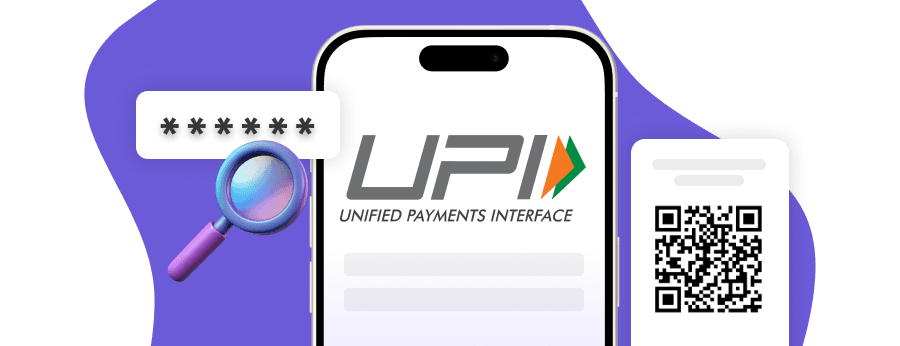UPI is one of the most widely used digital payment systems in India. Each time you make a UPI payment or transfer, the system creates a unique transaction reference number (UTR), a 12-digit numeric code defined by NPCI. Some apps or banks may display it with extra letters, making it appear 12–16 characters long.
This number serves as a reference for both the sender and the merchant so if there are any disputes or refunds it’s simpler to verify transaction details. Users can track UPI payments online, check successful settlements or delay in payments by keeping this number safe. Knowing this reference number allows users and businesses to monitor the status of digital transfers.
What Is UPI Reference Number?
A UPI reference number is a unique code generated automatically by the UPI payment system. It generally consists of 12 to 16 characters (as explained above, the variation appears because some banks add short prefixes) and is associated with the sender and receiver, serving a digital stamp for every UPI transaction. Unlike the meaning of UPI ID, which identifies a user’s account in the system, the reference number identifies the transaction itself.

How a UPI Reference Number Helps in Transactions
The reference number is a unique tracker that, once entered in the system, allows both customers and the merchant to follow payment flows. Whenever you need to confirm a payment or request a refund, both banks and apps will usually ask for this number in order to verify transaction details.
Difference Between UPI Reference Number and UPI ID
The UPI ID is linked to the individual, while the reference number is tied to payment. It serves as your transaction reference number, making it easy to track even a specific transaction in your transaction history. By providing this number, customers gain confidence that their transfer was processed by the system in a correct way.
In brief, the UPI reference number plays an important role to make UPI secure and traceable, serving as a reference for both the sender and receiver.
How to Find the UPI Reference Number
It is simple to find your UPI reference number if you know where to look. The code is automatically created by the payment system and recorded with every transaction, enabling users to track their payments.This reference number is available in apps or bank records.
Steps to Find UPI Reference Number in a UPI App
To find it, open the UPI app you use and look at your transaction history. Choose the exact transaction you need and under transaction details you will see a transaction reference number.
How to Locate UPI Reference in a Bank Statement
You can also find it in your bank statement. The reference number (UTR) is recorded alongside the debit or credit entry in your bank statement and is a 12-digit numeric code. Some banks may add short prefixes, making it appear up to 16 characters long. This number can be used to track and verify that the payment was processed.
Example of UPI Reference IDs
An example of a unique transaction reference might look like “012345678901” – a 12-digit numeric code used across all banks. It serves as a reference for the sender and receiver that helps them to find and track payments in a secure and safe way.
How to Track UPI Reference Number Online
Tracking your reference number online is a simple way to confirm if a payment has been completed. The code works as a tracker that links directly to the bank or app, ensuring you can find and track the progress of a transaction without delay.

Steps to Track the UPI Reference Number for a Payment
To begin, log in to the UPI app or your bank’s digital channel. Search for the transaction reference linked to the payment. The reference ID is a unique code that shows the current status of the transfer.
How to Check UPI Transaction Status Using the Reference Number
You can also check transaction ID through internet banking or mobile apps. The number is used to track the settlement stage, whether it is pending, successful, or failed. This process helps you know exactly what happened with the payment.
Tracking a UPI Payment Through Bank or UPI App
If you need more detail, banks provide options through online banking dashboards. By entering the specific transaction code, you can confirm processing and even request a refund if required. This feature ensures customers stay informed and maintain trust in the UPI payment system.
Benefits of Using UPI Reference Number
The UPI reference number is not only a tracking code but also a practical tool for improving transparency in digital transactions. When customers and merchants need proof of a completed transfer, this number provides clarity and confidence. It also simplifies dispute resolution by linking directly to verified records in the banking system.
Benefits of the UPI Reference for Online Payments
One of the biggest advantages is that it allows users to monitor payments in real time and confirm that funds were settled correctly. For example, when sending money within the UPI transfer limit (₹2 lakh per day for most users, as per NPCI), the reference number ensures that the value processed matches the intended instruction. It also helps both individuals and businesses keep their transaction history organized and searchable. For schools, e-commerce, or freelancers, this saves time during audits or reconciliations.
How Using the Reference Number Improves Security
Security is another key benefit, since every UPI reference number is unique and cannot be reused. This feature reduces the risk of fraud by linking each entry to a specific sender and receiver. Banks and payment apps use the reference to cross-check entries, making sure no duplicate or fake transactions slip through. In short, the number strengthens trust between the user and the financial institution.
Online Payment Company #1
Online payment solutions for all types of businesses since 2019
Subscribe to stay updated
on industry news, insights, and exclusive offers


